- 0 Comments
- 15 min Read
SHRAVAN MONTH / SAWAN MAAS 2023: SHRAVAN SOMWAR DATES, TIME (MUHURAT), FASTING, HOW TO DO PUJA VIDHI
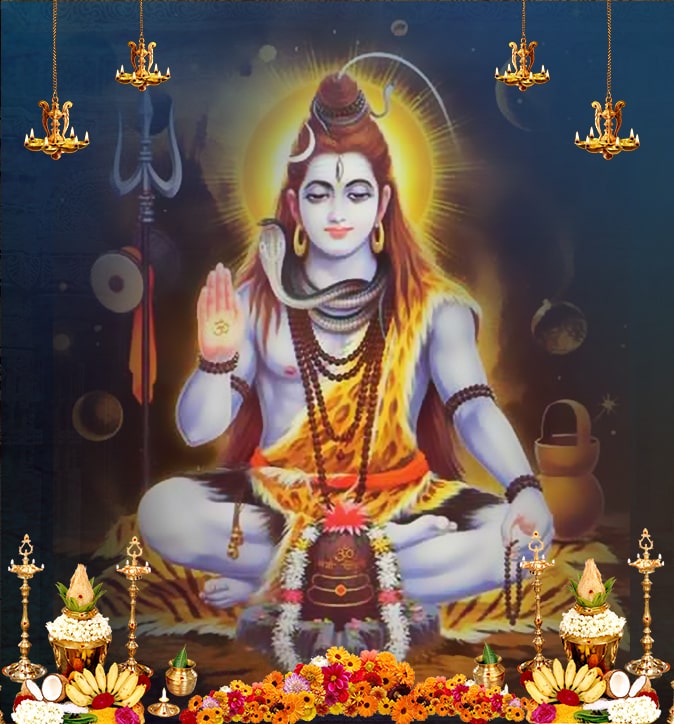
Of all the months, Shravan Maas (July-August) is considered most auspicious. In 2023, the Maas starts from July 4, 2023, Tuesday and ends on August 31, 2023, Thursday in Rajasthan, Uttar Pradesh, Madhya Pradesh, Punjab, Himachal Pradesh and Bihar where Purnimanta Hindu Calendar is followed and is celebrated from July 18, 2023, Tuesday and ends on September 15, 2023, Friday in Andhra Pradesh, Goa, Maharashtra, Gujarat, Karnataka and Tamil Nadu where Amavasya Lunar Calendar is followed. This year’s Shravan is 2 months long due to addition of extra lunar month also known as Adhik Mass, this is a rare phenomenon and occur once every 19 years. It is the fifth month of solar year and is also known as Avani in the Tamil scriptures. As per Vedic astrology, when Sun enters the zodiac Leo, Shravan Maas is said to set in. On every purnima of this month, the divine firmament (sky) is under the celestial sovereignty of Shravan Nakshtra (one of twenty seven Nakshatras) which is the birth star of Lord Vishnu. Therefore it is called Shravan. Each day during this month is auspicious for worshipping Shambhu (Shiva) and prayers and Vedic rituals are performed in Lord Shiva temples in order to please Him. Shravan Maas is also a holy month filled with other festivals such as Naga-Panchami, Govatsa, Shravani Purnima , Vara Lakshmi Vrata, Rishi Panchami, Raksha Bandhan, Kalkyavatara and Putradaikadashi.
During this month, the cosmos is super charged with Shiva tattvas (Shiva elements) that purify the mind, the senses, the body and the self (Soul) through the rituals dedicated to Lord Shiva.
SAWAN (SHRAVAN) AUSPICIOUS DAYS AND MUHURATS
The entire month of Shravan is considered auspicious to revere and worship Lord Shiva. Mondays or Somvars, which are typically dedicated to the worship of Lord Shiva are considered more so special and significant in the month of Shravan. In 2022, Shravan Somvar will fall on the following dates:
For North India (Rajasthan, Uttar Pradesh, Madhya Pradesh, Punjab, Himachal Pradesh and Bihar)
July 4, 2023, Tuesday: Shravana Begins *North
July 10, 2023, Monday: First Shravan Somwar Vrat
July 17, 202 3, Monday: Second Shravan Somwar Vrat
July 18, 2023, Tuesday: Shravana Adhika Maas Begins
July 24, 2023, Monday: Leaped First Shravan Somwar Vrat
July 31, 2023, Monday: Leaped Second Shravan Somwar Vrat
August 7, 2023, Monday: Leaped Third Shravan Somwar Vrat
August 14, 2023, Monday: Leaped Fourth Shravan Somwar Vrat
August 16, 2023, Wednesday: Shravana Adhika Maas Ends
August 21, 2023, Monday: Third Shravan Somwar Vrat
July 31, 2023, Monday: Leaped Second Shravan Somwar Vrat
August 28, 2023, Monday: Fourth Shravan Somwar Vrat
August 31, 2023, Thursday: Shravana Ends
For Rest of India (Andhra Pradesh, Goa, Maharashtra, Gujarat, Karnataka and Tamil Nadu)
July 18, 2023, Tuesday: Shravana Begins *South
July 24, 2023, Monday: Leaped First Shravan Somwar Vrat
July 31, 2023, Monday: Leaped Second Shravan Somwar Vrat
August 7, 2023, Monday: Leaped Third Shravan Somwar Vrat
August 14, 2023, Monday: Leaped Fourth Shravan Somwar Vrat
August 16, 2023, Wednesday: Shravana Adhika Maas Ends
August 21, 2023, Monday: First Shravan Somwar Vrat
August 28, 2023, Monday: Second Shravan Somwar Vrat
September 4, 2023, Monday: Third Shravan Somwar Vrat
September 11, 2023, Monday: Fourth Shravan Somwar Vrat
September 15, 2023, Friday: Shravana Ends
Festivals celebrated during Shravan Maas and their dates:
Kamika Ekadashi Vrat: 13th July 2023
Hariyali Teej: 19th August 2023
Nag Panchami: 21st August 2023
Shravan Putrada Ekadashi: 27th August 2023
Varalakshmi Vratam: 25th August 2023
Shravani Purnima: 30th August 2023
Raksha Bandhan: 30th August 2023
Gayatri Jayanti: 31st May 2023
Krishna Janmashtami: 6th September 2023
Sanskrit Diwas: 31st August 2023
Rishi Panchami: 20th September 2023
SIGNIFICANCE OF SHRAVAN MAAS
Shravan Month is glorified in many scriptures as the holiest month of the year. To gain divine blessings and benefits, devotees observe austerities, fast, do meditation and offer prayers.
Legends associated with Shravan Maas
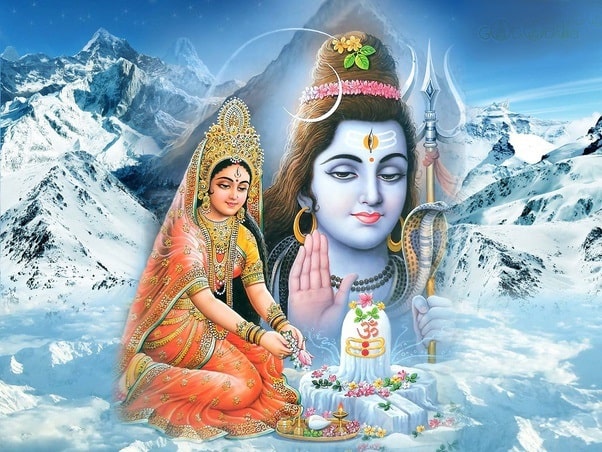
It is said that Maa Parvati carried out hard penance and fasting for the entire month of Shravan to get married to Lord Shiva and have Him as Her consort. Pleased with Her dedication and devotion Lord Shiva obliged and fulfilled Her wish.
Shravan Maas is the first month of the Chaturmas period, which are four months (Shravan, Bhadrapada, Ashwin and Kartik) dedicated to bhakti and revering the Divine. As per the scriptures, during this period, Lord Vishnu goes into Yoga Nidra (state of deep meditation) on the Adi Shesha (seven-hooded serpent) underneath the Kshirasagara (cosmic ocean), and Lord Shiva takes care of the whole creation. We can interpret this as the preservation and nurturing aspect of life (governed by Lord Vishnu), stopping to make way for destruction(Lord Shiva). Finally, the old has to give way to the new, so creation, nurturing, and destruction remain an endless cycle. Devotees follow a strict sattvic lifestyle and indulge in devotion and worship to seek blessings and protection from the divine during this period.
SIGNIFICANCE OF EACH DAY IN SHRAVAN MAAS

Each day of this month carries spiritual significance.
Monday: It is the day to worship Lord Shiva.
Tuesday: Women worship Gauri for the better health of their families.
Wednesday: It is dedicated to Vithala, an incarnation of Lord Vishnu or Krishna.
Thursday: It is for worshipping Buddh and Guru.
Friday: It is for worshipping Lakshmi and Tulsi.
Saturday: Dedicated to Saturn (Shani Dev): It is known as Shravan Saturdays or Sampat Sanivara (wealth Saturdays), as one can pray to obtain wealth.
Sundays: are for the Sun god. Sun worship was common practice in the Vedic period, and it is followed even now. Especially in Shravan, every Sunday, the Sun is worshipped.
THINGS TO DO IN SHRAVAN MAAS
1. Rudra Abhishek
'Rudra' means the one who is terribly infuriated, which is one of the divine qualities of Lord Shiva who displays it while performing His cosmic dance, Tandava for the annihilation of creations. Shiva, by the virtue of this quality, is called Rudra. Abhishek means a method of worship offered to the Divine for cleansing all the misgivings, sins of the worshiper.
Performing Shiva Abhishek includes the offerings of Panchamrit (mix of milk, honey, sugar, ghee and curd, Ganga jal, ghee, Bael Patra (Bilva leaves), Dhatura and other sacred items dear to Lord Shiva.
Rudra Abhishek purifies your mind and body, offers peace, fulfills your desires and enlightens your soul.
Book Rudra Abhishek
Buy Shivling for Rudra Abhishekam
Buy Abhishek Vessel for Rudra Abhishekam
2. Fasting
During Shravan Maas devotees mostly undertake four types of Vrats (fasts) which are Sawan Somwar Vrat, Solah Somwar Vrat, Pradosh Vrat and Mangala Gauri Vrat.
- Sawan Somwar Vrat – Sawan Somwar Vrat is observed every Monday (Somvar) in the month. There are mostly 4 Mondays during Shravan, and sometimes there are 5.
- Solah Somwar Vrat – It is observed by young girls to find the most ideal husband. They fast for 16 consecutive Mondays starting from the first Monday of this month.
- Pradosh Vrat – Pradosh vrat is observed on the 13th day (Trayodashi tithi) of both Krishna Paksha and Shukla Paksha. The thirteenth day is considered extra special for invoking and worshipping Lord Shiva. On this day, devotees keep a strict fast and perform Shiva puja during the Pradosh Kaal.
- Mangala Gauri Vrat – Mangala Gauri Vrat is observed on Tuesdays in the Shravan Maas. The fast is observed for happy married life and well-being and the long life of the partner.
- Shani Vrat – Shani Vrat is observed on Saturdays during the Shravan Maas primarily for pacifying Lord Shani and gaining His blessings.
3. Worship of Lord Shiva (Shravan Somwar Puja Method)

Devotees should wake up early, preferably during Brahma Muhurat, clean the Puja altar, take a bath and wear clean clothes. Purify the house with water mixed with Ganges water. Take Sankalpa to observe the fast.
Perform the Abhishek ritual on the Shivalinga. It is believed that Lord Shiva is pleased even with simple offerings of wild creepers and flowers which are easily available such as Aak flowers, Bel leaves and Datura. Offer bhasma, sandal paste, lotus flowers and Rudraksha beads during prayers.
One may chant the following Shiva Mantras using a Rudraksha rosary or silently in mind. Chanting may be done at a specified time and with a specific number of counts (108 times or multiples of it) in the morning or evening, or you may do ajapa-japa and silent repetition of the mantra throughout the day.
Om, I am One with the Supreme reality.
tryambaka yajamahe sugandhi pushtivardhanam
urvarukamiva bandhan mrityormukshya mmrat
OM! We worship the three-eyed Lord, who is fragrant and Who nourishes and nurtures all beings. As the ripened cucumber (without the intervention of the gardener) is freed from its bondage (to the creeper), may He liberate us from death for the sake of immortality.
Om Tatpurushaya Vidmahe Mahadevaya Dhimahi
Tanno Rudrah Prachodayat
OM! Let me meditate on the great Purusha, Oh, greatest God, give me higher intellect, and let God Rudra illuminate my mind.
Also, you can read stories of Lord Shiva, read the Shiva Purana and meditate on His holy form. This is true Bhakti.
Worshipped should be offered twice a day. Firstly, early in the morning and then once after Sunset During the day, devotees may consume fruits and permitted food items during the fast. After sunset, one regular sattvic meal can be taken Be in a devotional mood throughout the day. Avoid consumption of alcohol or tobacco or non-veg.
LORD SHIVA - THE GOD OF TRANSFORMATION
Lord Shiva is the one who blesses one with Moksha. He is actually taking us out from the illusionary world of Kama, Krodha, Moha, Mada and Lobha and making us realize who we are and what is our true purpose of existence. Thus the power of destruction of Lord Shiva has a great purifying power on a universal level. The destruction opens the path for a new creation of the universe, a new opportunity for the beauty and drama of universal illusion to unfold.
ABOUT JYOTIRLINGA AND SHRAWAN MAAS CELEBRATIONS
Jyotirlinga and Shrawan Maas CelebrationThe 12 Jyotirlinga are the twelve most important temples of Lord Shiva. These are the places where Lord Shiva manifested in His Lingam form. These temples are Somnath, Mallikarjuna, Mahakaleshwar, Omkareshwar, Vaidyanath, Bhimashankar, Rameswaram, Nageshwar, Kashi Vishwanath, Trimbakeshwar, Kedarnath and Grishneshwar. For the entire Shrawan Maas and especially on Mondays, they are thronged by lakhs of Shiva devotees. Fairs, yatras and elaborate pujas and yagnas are organized here as the devotees pray to Shiva with much gusto, fanfare and devotion.
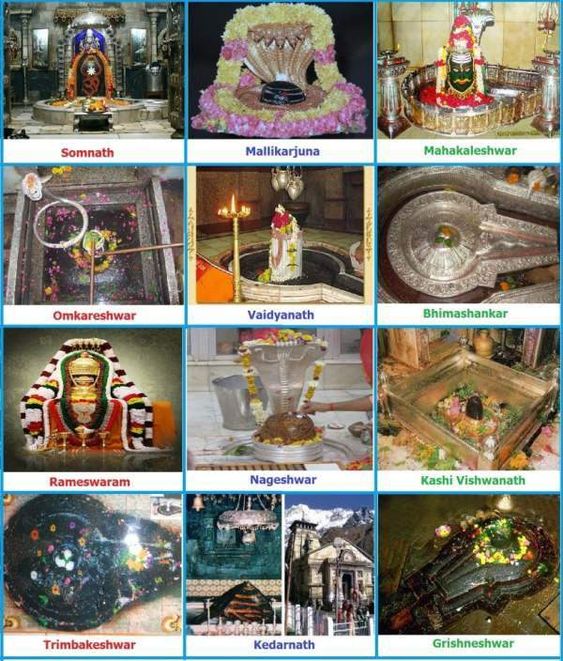
Other Highlights of Shravan Maas
Kanwar Yatra – The Kanwar Yatra is an annual pilgrimage undertaken by Lord Shiva devotees, popularly known as Kanvari, during Shravan Maas in North of India. In this Yatra, devotees collect Gangajal (water from the holy river Ganges) from Hindu pilgrimage places such as Haridwar, Gaumukh and Gangotri and Sultanganj in pots and carry them on foot to major Shiva temples such as Kashi Vishwanath, Baidyanath, and Deoghar by walking hundreds of miles along with chants of 'Jai Bhole' and 'Jai Shiv Shambhu'. On reaching, they offer the water to Shivling in the temple as Jal abhishekam. The Yatra has gained immense popularity in the last couple of decades and has now become one of India's largest annual religious gatherings, with an estimated strength of more than 12 million participants.
Shravani Mela – During the Shravan Maas, the Shravani Mela has become a major festival in Deoghar, Jharkhand. In the annual month-long mela at the Baba Baidyanath temple, Deoghar thousands of Shiva devotees collect Gangajal from Sultanganj and offer it at the Baba Baidyanath Dham, which is around 100 kilometres away.
PUJAS PERFORMED IN SHRAVAN MAAS
SHIVA PUJA AT TRIMBAK TEMPLE
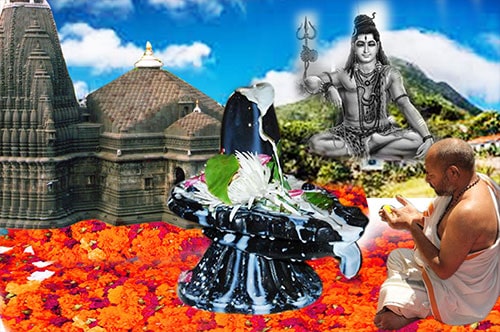
CLICK HERE TO BOOK PUJAS AT TRIMBAKESHWAR
Performing a Shiva Puja at Tryambakeshwar Temple during Shravan is one of the most auspicious spiritual and uplifting activities. Trimbakeshwar temple is one of the ancient Shiva temples and is one of the twelve Jyotirlingas. The place is highly recommended for Shiva pujas and religious rituals.
RUDRAM CHAMAKAM YAGNA PUJA
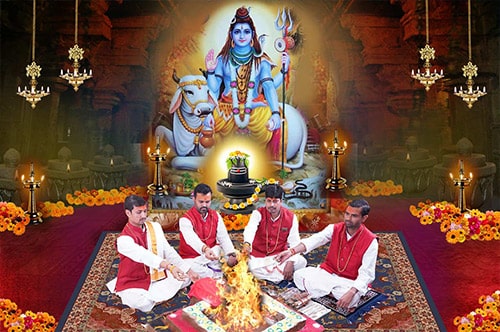
CLICK HERE TO BOOK RUDRAM CHAMAKAM YAGNA PUJA
Shri Rudram is one of the oldest names of Lord Shiva. Through the chanting of Sri Rudram, Lord Shiva's various attributes and aspects are invoked and worshipped. By the power of Shri Rudram sick become well, the unmarried find the ideal mates, debts are removed, wealth and power are showered, and all the ills are kept at bay.
MANGALA GOURI PUJA
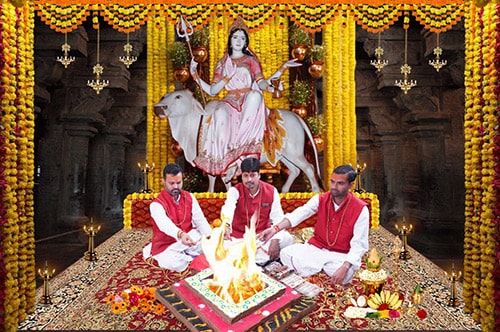
CLICK HERE TO BOOK MANGALA GOURI PUJA
Alongside the above popular Shiva Puja, one can perform Mangala Gouri Puja on Tuesday. Goddess Maha Gauri is worshipped for Her blessings for desire fulfilment. Observing fast and worshipping Goddess Mahagauri during Shravan Maas is immensely fruitful, especially for unmarried girls and married women.
MAHAMRITUNJAYA PUJA
.jpg)
CLICK HERE TO BOOK MAHAMRITUNJAYA PUJA
Maha Mrityunjaya Puja is done for long and healthy life and to get rid of prolonged sickness. Mahamrityunjaya Mahadev is the conqueror of death. The Mahamrityunjaya Mantra helps overcome all sorts of negativities fears and induces deep spiritual self-realization. Shiva is the soul, and prayer to Him makes one realize the eternity of self and thus removes the fear of death
SHIV PARIVAR PUJA
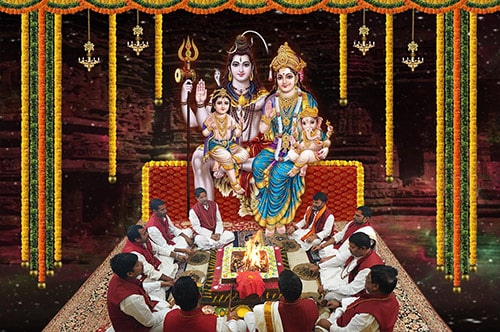
CLICK HERE TO BOOK SHIV PARIVAR PUJA
The Shiv Parivar Pooja is performed to get family bliss and seek blessings of the divine family of Lord Shiva that has four members, namely, Lord Shiva, His consort Parvati, and the two sons, Kartikeya (Subramanya) and Ganesha (Vinayaka). The Shiva Parivar is a symbol of harmony, prosperity, and completeness. The Shiva Parivar in itself encompasses the entire universe and the essence of the entire universe.
PARTHIV SHIVLING PUJA
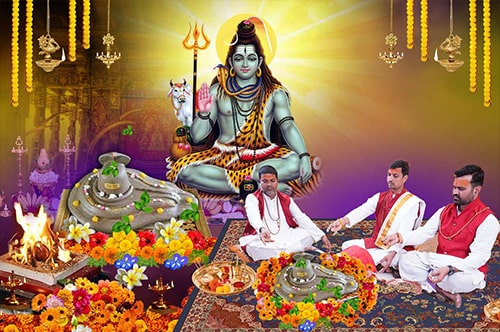
CLICK HERE TO BOOK PARTHIV SHIVLING PUJA
Parthiv Shivling puja is very auspicious and generally done throughout the Shravan Maas, especially on Mondays of that month. Twelve Parthiv Shivlings are made and worshipped following the puja vidhi (rituals). The worship includes offerings of Bael or Bilwa leaves, White Kaner flower (Oleander), Milk, Sugar and Rice grains on top of the Shivlings. The rest of the day should be spent in chanting mantras and singing the praise of Lord Shiva.
SHRAVAN MAAS MAHA PUJA 2021 BY RUDRA CENTRE PUJA SERVICES
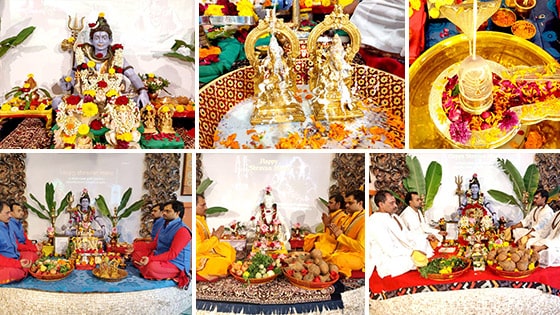
SHRAVAN MONTH FASTING: HOW TO FAST DURING SHRAVAN, FASTING RULES
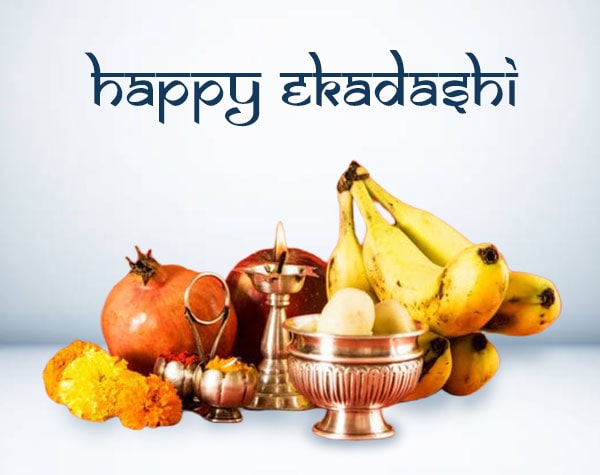
Fasting during Shravan Maas has been mentioned in the Shiva Purana. According to Shiva Purana, those who observe fast during Shravan Maas have their desires fulfilled and are blessed with the grace of Shiva. Shravan Maas Somvar is very important for the devotees of Lord Shiva.
Devotees may have ‘phalahar’ meaning consumption of fruits during fasting. Milk and milk-related products such as buttermilk, yoghurt, cottage cheese, homemade butter (without salt), paneer and ghee are also permitted. Devotees may also certain permitted vegetables such as sweet potato, potato, suran and ratalu. Sabudana (sago or tapioca) can also be consumed in fasting. Devotees can also consume dry fruits and nuts, rock sugar (mishri), coconut and peanuts. For spices, black pepper and certain other spices are permitted. Tamasic food items such as onion, garlic, radish and spices are especially avoided during fasting.
The fast is broken after sunset, although in some cases, it continues till the next day. Devotees offer their prayers to Lord Shiva and then consume normal food.
Another type of fasting is that you can keep a maun vrat (silence) for one whole day in this month and chant mantras in your mind.
Can we eat salt in Savan (Shravan) month?
Those who observe strict fasting avoid table salt and take black salt instead. It is advised to avoid non-veg, onion, garlic, brinjal and leafy vegetables during this entire month.
Benefits of fasting on the Somvar (Monday) in Shravan Maas:
- Devotees are blessed with spiritual bliss
- Improves physical and mental health
- Increases willpower and memory
- Women who fast on Shravan Mondays (Somvars) get their perfect husband
- Fasting removes obstacles by expelling negativity
OTHER FESTIVALS AND AUSPICIOUS DAYS IN SHRAVAN MAHINA / SHRAVAN MAAS 2022
Hariyali Teej
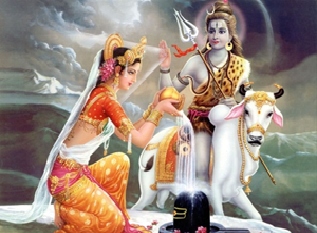
Teej is chiefly associated with marriage in India. The marriage ceremony is considered one of the highly honoured rituals in the Vedas. During the Teej festival, married women fast for the longevity of their husbands. Unmarried girls can also fast and offer prayers for suitable life partners. Kajari Teej is celebrated on the third day of Krishna Paksha (dark fortnight) of Bhadrapada (Aug-Sept). Kajri Teej is also known as ‘Kajli Teej’ and ‘Badi Teej’. There are other Teej festivals, also known as Hariyali Teej, Kajari Teej and Hartalika Teej. Along with these, we also have Akha Teej, popularly known as Akshaya Tritiya.
Nag Panchami in Sharavan Month
It is a traditional Vedic worship of snakes or serpents observed by the followers of Vedic customs. The worship, prayers and rituals are performed on the fifth day of the bright half of the lunar month of Shravan (July/August).
The divine abode of Nagas is believed to be Naga Loka. The snake gods are worshipped for the welfare of the family. Serpent deities of silver, stone or wood or the painting of snakes on the wall are given a bath with milk and then respected.
Shravan Putrada Ekadashi
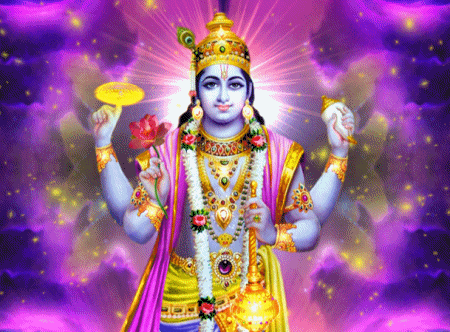
Putrada Ekadashi is observed for the worship of Lord Vishnu. A married couple who cannot have a male child after marriage for quite a long time observes this Ekadashi by pasting and offering prayers to Lord Vishnu. ‘Putrada’ is derived from the Sanskrit root ‘Putr’ meaning ‘son’ and ‘ada’ meaning ‘bestowing or giving’. The Vedas consider Lord Vish,nu who in a sense is Brahma and Rudra Himself, to be the bestower of the benedictions. One may question the significance of this Ekadashi and consider it partial toward the female child. It is to be understood that it is celebrated by the married couple who have no son after marriage for a quite long time. In the ancient times, when all the daughters were given in marriage to the families worthy of worship, the aging parents who had only daughters needed a son for support as a son with his wife would then take care of their parents.
Varalakshmi Vratam

Varalakshmi or Varamahalakshmi Vrata is dedicated to the Goddess of Fortune Lakshmi. It is the only festival wherein the goddess grants boon or wish fulfilment. ‘Vara’ means ‘Boon’, ‘fulfillment of wishes’. On this day, a special Lakshmi puja is performed in order to please the goddess of fortune auspiciousness. The Sanskrit word ‘Lakshya’, which means ‘aim’, also comes from ‘Lakshmi’. It signifies our purpose (aim) in life to attain both, material prosperity and spirituality. Lakshmiji, when pleased with the pure heart of her worshipper bestows upon them both.
Rakshabandhan in Shravan month

Click here to Buy Raksha Bandhan Products
It is a traditional Vedic worship of snakes or serpents observed by the followers of Vedic customs. The worship, prayers and rituals are performed on the fifth day of the bright half of the lunar month of Shravan (July/August) The divine abode of Nagas is believed to be Naga Loka. The Snake gods are worshipped for the welfare of the family. Serpendeitiesty of silver, stone or wood or the painting of snakes on the wall are given a bath with milk and then respected.
Gayatri Jayanti in Shravan month
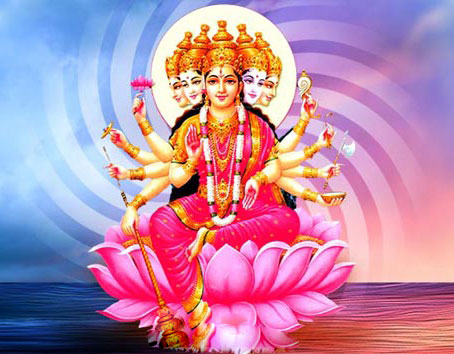
Gayatri Jayanti is the appearance day of Goddess Gayatri, who is regarded as the mother of Vedic literature. She is said to be a divine manifestation of all phenomenal characteristics of the supreme Brahman. One often identifies Gayatri with Saraswati. However, she is the embodiment of Saraswati, Parvati and Lakshmi, representing knowledge, beauty and opulence, respectively. The celebration of Gayatri Jayanti takes place during Shravan Purnima in South India, with some celebrating it on Shukla Paksha Ekadashi during the Jayeshtha Lunar month. It is said that Goddess Adishakti took the form of Gayatri and killed the demonic Vetrasura on this day.
Krishna Janmashtami in Shravan month
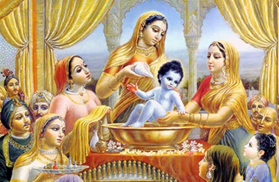
Krishna Janmashtami is a festive ceremony performed across India to celebrate the birth anniversary of Lord Vishnu's eight incarnations, Lord Krishna. It marks the 5246th birth anniversary of the Lord. August-September (Shravana month) is the time when Janmashtami is celebrated. Those who plan to fast on the day of Janmashtami should eat only a single meal on the previous day. During Janmashtami devotees should take a Sankalpa to observe a one-day-long fast and break it the next day after Rohini Nakshatra and Ashtami tithi are over.
 INR
INR

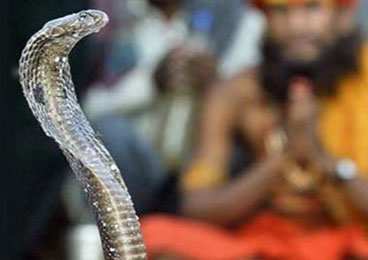








 Credibility Since 1997
Credibility Since 1997  Fastest Delivery
Fastest Delivery  Expert Advise & Counselling
Expert Advise & Counselling  Worldwide Distribution
Worldwide Distribution  Vedic Pooja Energization
Vedic Pooja Energization  Over 100,000 + Testimonials
Over 100,000 + Testimonials 
Leave your thought here